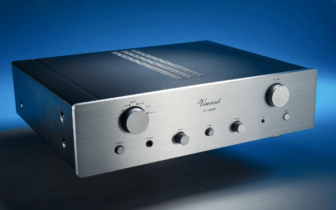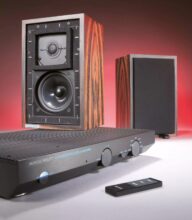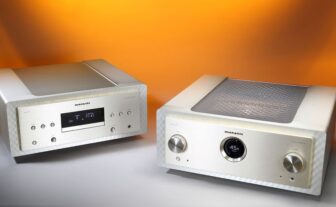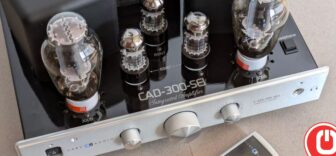Rowen Swiss HD Smart Amp Review
The small, fine Swiss company Rowen may until now be known only to insiders in Germany. That should change with the Smart Amp from their brand Swiss HD. For the little integrated amplifier David sounds huge and even takes on speaker Goliaths.
by Lothar Brandt
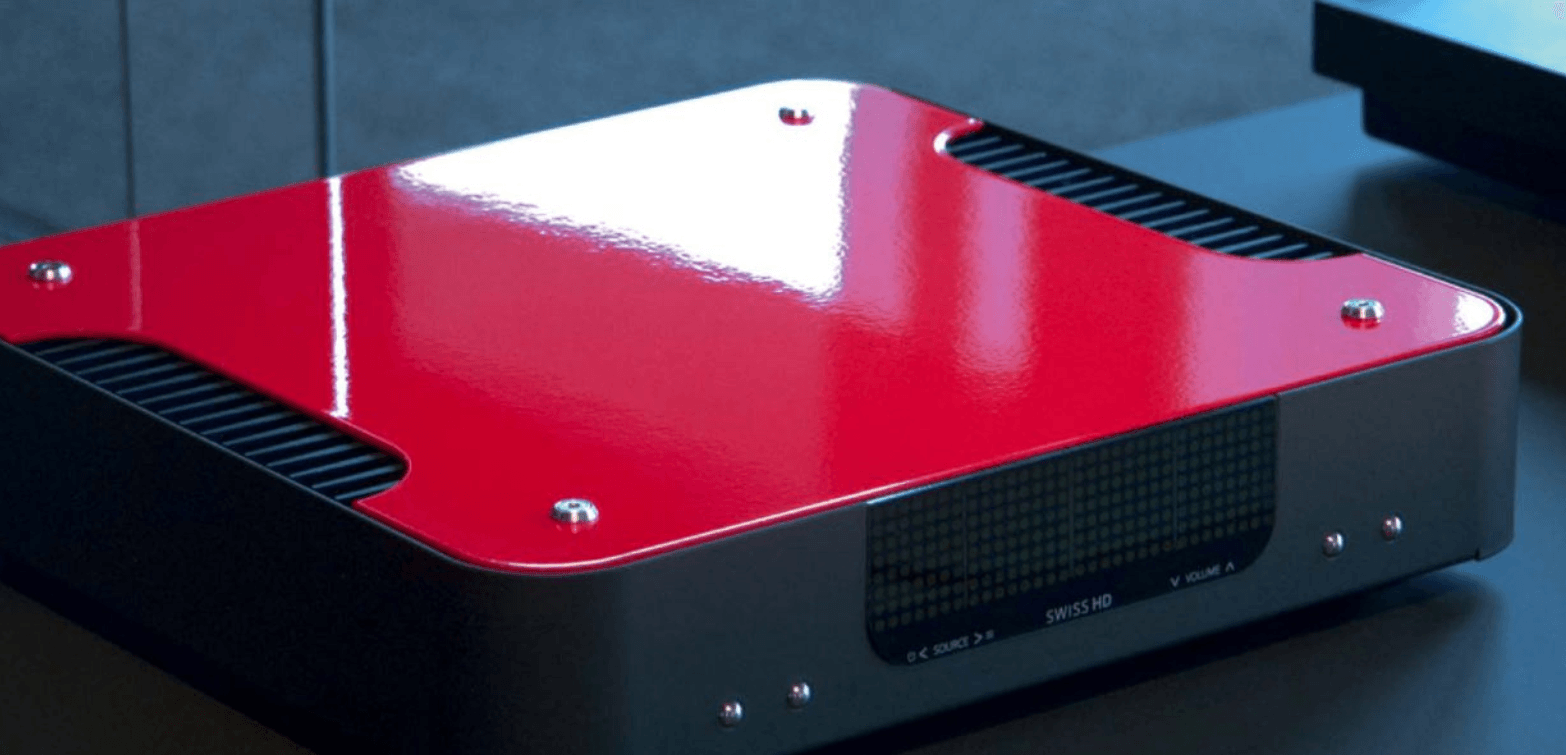
One might consider the experiment bold. Or overconfident. To unleash a transistor integrated amplifier with nominally just 50 watts on speaker behemoths like the Bowers & Wilkins 801 D4, KEF Blade, or Piega Master Line Source 3. Or vice versa. However: Operation succeeded, sound lived. And how. The supposed amplifier David proved himself equal to the speaker Goliaths. Yet the Swiss HD Smart Amp did not slay them in battle like the biblical archetype but rather awakened them to vital dynamics. Experience makes one wise. Among others, the author.
He was able to experience exactly this experimental setup in Switzerland. And because it had worked so well, the writer of these lines agreed with Yvo Aebischer, the initiator of this experiment, to repeat it in a regular test in 7Review. In principle. After all, the even more expensive, even more refined Bowers & Wilkins 801 D4 Signature had announced itself.
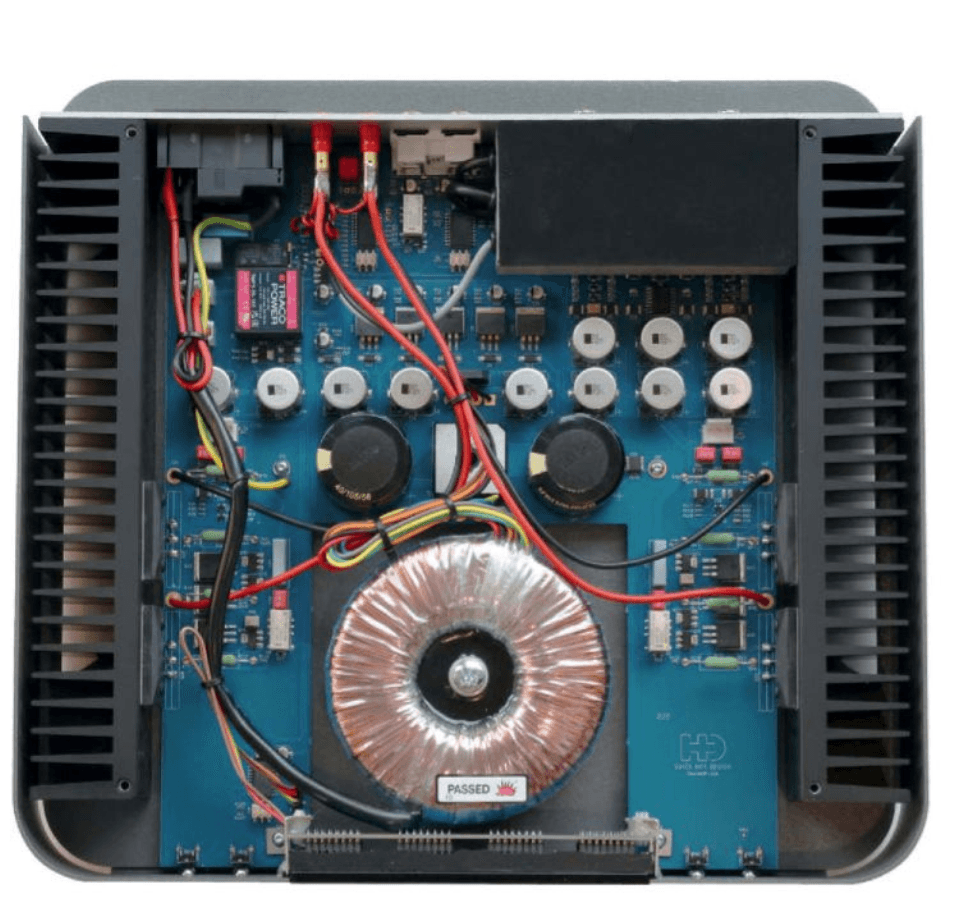
Not out of nowhere
But more on that later. First, it’s time to delve a little into the background and origins of that integrated amplifier which so boldly challenges the industry’s giants. It certainly doesn’t come out of nowhere. Behind it lies the concentrated know-how from decades of company history of Dynavox electronics SA from Switzerland. They are the parent company of Rowen, a creation of the energetic Swiss importer, engineer, and developer Anton Aebischer – see box. Thanks to its clever electronics and speakers that are living room-friendly to large space-filling, Rowen is a big player in the land of the Swiss. Together with a Swiss furniture maker, Dynavox founded the joint company Swiss HiFi Design, or Swiss HD for short.
There are truly wonderful high-end furniture pieces, which, for example, can make a complete AV system completely disappear – equipped with Rowen technology. Or three complete loudspeaker lines based on Rowen know-how. And for a few years now, the Swiss HD Smart Amp, which, although it appears somewhat different in design from the various amplifiers from Rowen, is pure Rowen inside. It was mainly developed by Pascal Aebischer, who, together with his brother Yvo, has taken over the challenging legacy of their father Anton.
Thus, the Smart Amp is 100 percent from Switzerland, outwardly appearing rather modest according to local custom. A special feature: the dot-matrix display. Those who consider this a somewhat quirky clinging to supposedly antiquated optics must be corrected. It is part of Dynavox’s strategy aimed at special longevity. Firstly, it is significantly more robust than, for example, a high-resolution OLED display. Secondly, much easier to retrofit than the supposedly modern displays. For Yvo Aebischer, it is “absurd to have to dispose of an entire device just because the display is defective.” Without batting an eye, the Dynavox managers aim for a lifespan of “at least 30 years,” after which their products should still bring unrestricted enjoyment.

Therefore, fast-moving digital components like streamers are left out. “Others can do that better and with much shorter product cycles.” As clever as it is logical. However, Pascal Aebischer equipped the Smart Amp, as a modern system center, with a DAC that stays within reasonable bounds with a resolution capability of 24-bit word width and 192 kilohertz sampling frequency, admittedly only with PCM and only via optical or coaxial inputs. DSD via USB, for example: no way. But after all, that’s why there are specialized sources.
The core business of the Smart Amp is indeed amplification. And that with a lot of comfort. It automatically detects which source is currently supplying (“Audio Sensing”, with adjustable sensitivity), assigns each input its name and specific volume settings, can automate further functions and undo this automation again, can train other remote controls—all explained in the easily understandable user manual.
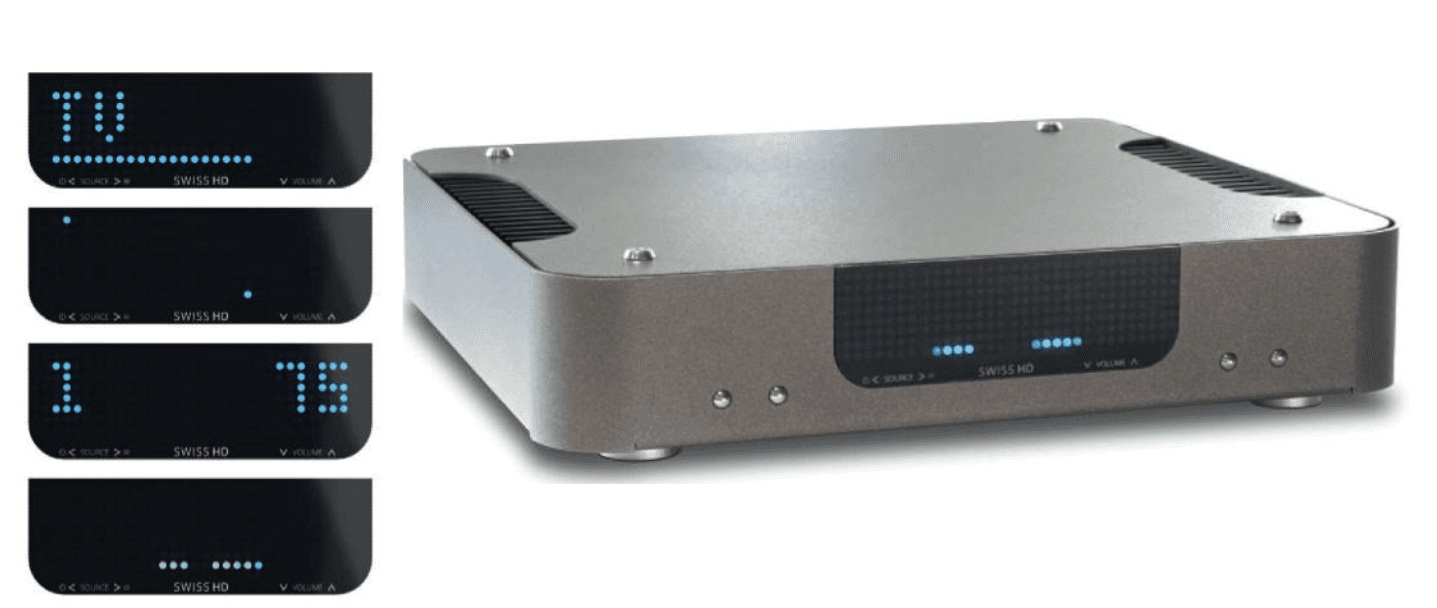
In addition to these smart features come the circuit engineering tricks. There is the “overcompensated damping factor”: Based on the realization that, besides the frequency-dependent impedance, a loudspeaker demands much more from an amplifier’s voltage stability due to the so-called back EMF (generated by the backward movement of the oscillating diaphragm) than is visible on the data sheet. Accordingly, current delivery capability is at the very top of the specification for Rowen amps. No speaker relays, no current limiter circuits, no capacitors in the signal path (complete DC coupling) – that’s how the interior of the Smart Amp presents itself. The overall negative feedback is limited to what’s necessary (the large Rowen power amps dispense with it entirely).
The input stages are designed with ODS (Optimal Dynamic Sensitivity) for optimal dynamic range, just like the preamp outputs configured in single-ended Class A.
Out of nowhere
And so this comparatively small amplifier can perform huge dynamic leaps almost out of nowhere. It made a mighty impression how it reproduced the fascinating drumming of Steve Gadd in Rickie Lee Jones’ “We Belong Together” (from “Pirates”, MFSLLP). And that also in the AUDIO listening room with the freshly delivered B&W 801 D4 Signature.
Or how it unleashed the grand orchestral sound masses of, for example, Anton Bruckner’s Fourth Symphony seemingly effortlessly at lifelike volume. Or how it piled up powerful progressive rock attacks into walls of sound with concentrated power.
Rowen: Swiss Quality from the Beginning
The story of Rowen begins in 1971, when Anton Aebischer completed his first preamplifier. Prior to that, he had already made a name for himself in the hi-fi industry as an importer with Dynavox. He was part of that group of European importers who founded New Acoustic Dimension (NAD) in 1972. Rowen has been producing in Switzerland from the beginning. In 1987, the trained radio and TV electronics technician and graduate electrical engineer presented the first loudspeaker based on the full bipolar principle, and in 2000, with the Absolute One, the first power amplifier with “overcompensated damping factor” and power up to 4000 watts. In the meantime, Aebischer has handed over the operational business to his sons Yvo and Pascal, who have moved into the imposing new company headquarters in Düdingen, canton Fribourg. Swiss HD is a brand of Rowen.
Rowen Swiss HD Smart Amp Report
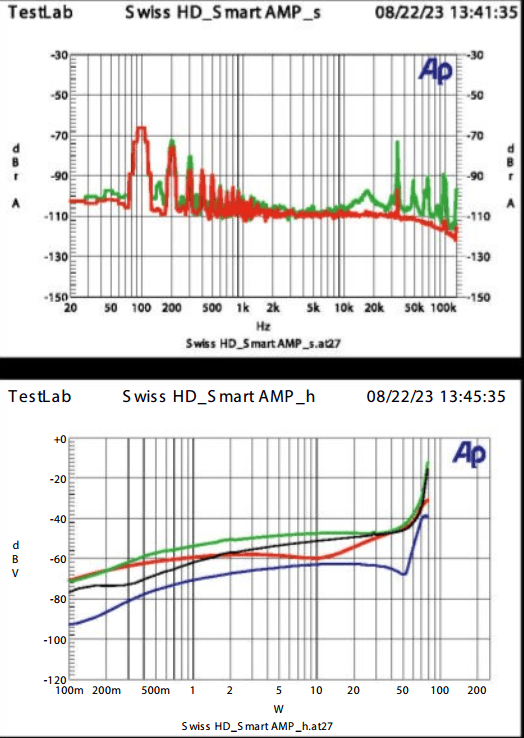
Energy-efficient amplifier with negative output impedance, level increase 2 to 8 Ω: 0.7 dB. Linear frequency response with a bandwidth from 10 Hz to 36 kHz (−3 dB). Power consumption (standby / operation / 2×1 W / maximum): 1.5 W / 14 W / 42 W / 280 W. Noise increased at analog and digital input, 87 dB (A-weighted, 10 V). Idle noise spectrum (1 W, left/right) with pronounced 100 Hz harmonics (above). Slightly increased distortions, soft clipping, 0.15% THD+N at 1 W (below). Volume control with large dynamics (−64 to +47 dB) and 2 dB step size in the middle range. Sine power (8/4 Ω): 52/74 W. Complex music power (8 / 6 / 4 / 3 / 2 Ω): 53 / 69 /85 / 90 / 96 W, respectively per channel.
AUDIO score: 5.3
Technical Specs

- List Price: €3900
- Warranty: 5 years
- Dimensions (W × H × D): 33.0 × 6.5 × 31.0 cm
- Weight: 8.3 kg
Connections
- Phono MM/MC: No
- High-level Cinch/XLR: 3 / –
- Digital Inputs (Optical, Coax, USB): 2 / 2 / –
- Tape Out: Line Out with fixed level
- Pre Out Cinch/XLR: Yes / No
- Headphones: No
Features
- Remote Control: IR, “teaches” other remotes
- Loudness: No
CONCLUSION:
With its crisp, powerful sound, this Swiss amp can definitely give the impression that a significantly larger colleague is at work here. This kind of mimicry can then in good conscience be called “smart”.
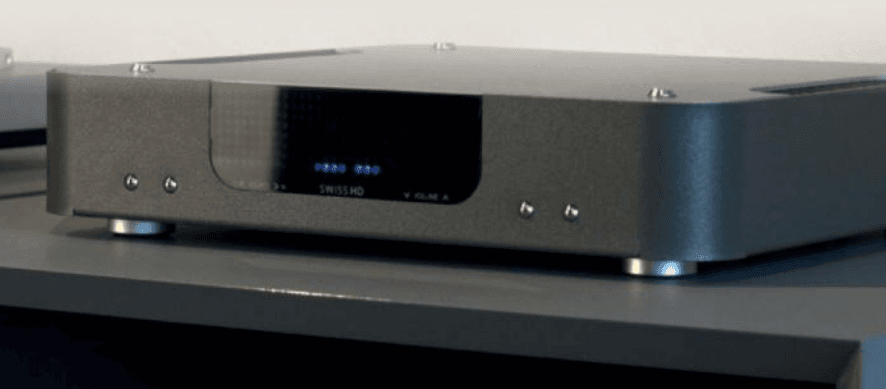
Pros & Cons
✅ Fresh, dynamic, and impactful sound
✅ Drives even large speakers well
✅ Designed for longevity
❌ Fairly high price
❌ No XLR connections
❌ Digital board without USB and no DSD support
Ratings
- Sound Quality (High-Level Cinch): 8.4/10 (original score: 167)
- Features: 6/10 (original rating: “satisfactory”)
- Usability: 9/10 (original rating: “very good”)
- Build Quality: 10/10 (original rating: “outstanding”)
Audio Benchmark
- Overall Score: 8.4/10 (original: 167 points)
- Price/Performance: Very Good



